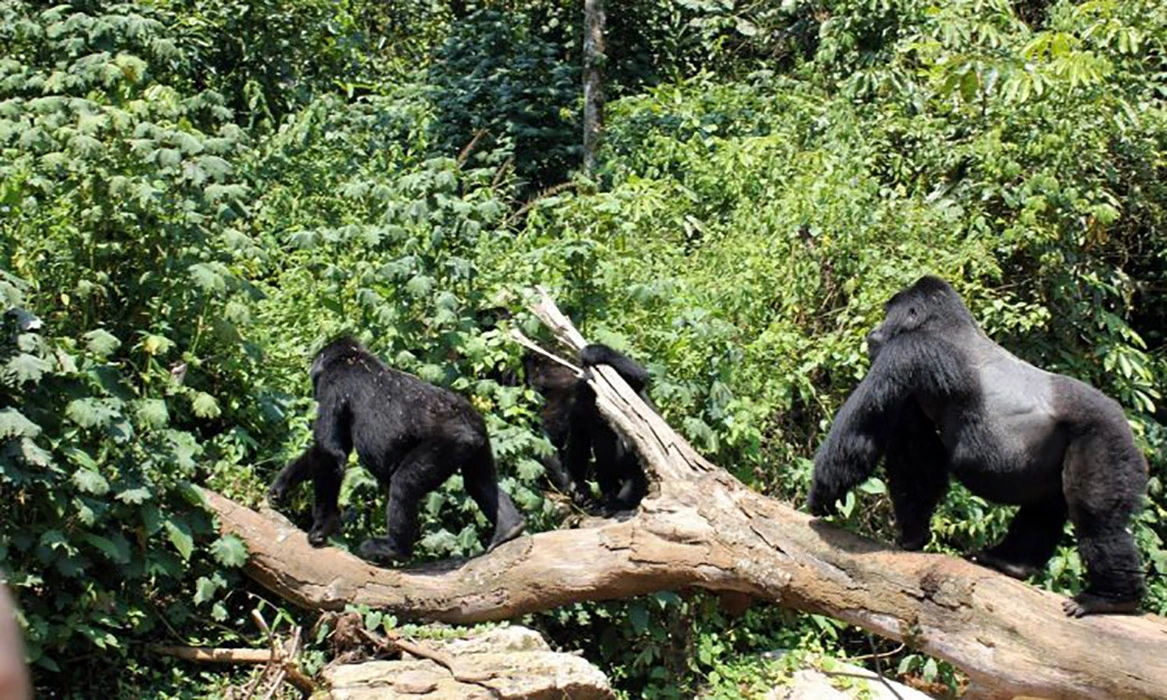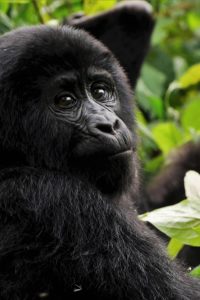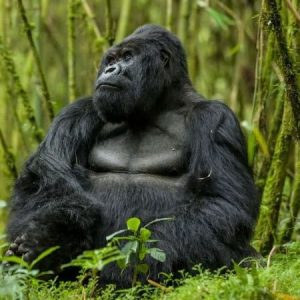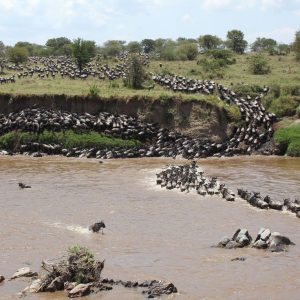Uganda Gorilla and Chimpanzee Safari
Are you prepared for an incredible journey in the heart of Africa? Uganda is the perfect destination for gorilla and chimpanzee trekking. Uganda Gorilla and Chimpanzee Safari. Discover the untamed beauty of these majestic creatures as you take an adventurous journey through deep forests and breathtaking scenery.
Uganda, known as the ‘Pearl of Africa,’ is home to more than half of the world’s mountain gorilla population. Making it an ideal destination for both wildlife aficionados and environmental lovers. Imagine coming face to face with these gentle giants, seeing their sophisticated social activities, and feeling a deep connection to nature. Gorilla trekking in Uganda takes place at the Bwindi Impenetrable National Park and the Mgahinga National Park.
But the adventure does not stop there. Uganda is also known for its thriving chimpanzee population. Trek through Kibale Forest National Park, where you’ll get the rare opportunity to see these interesting primates in their native environment. Watch their quick movements, listen to their raucous calls, and observe their tight-knit family dynamics.
Uganda provides an unforgettable experience with its magnificent environment, unique animals, and kind locals. Whether you’re an avid wildlife photographer, a conservationist at heart, or simply looking for a thrilling encounter with nature, gorilla and chimpanzee trekking in Uganda will leave you with unforgettable memories. Don’t miss out on this once-in-a-lifetime opportunity; start planning your adventure now.
Top gorilla and chimp trekking spots in Uganda
Uganda is home to several notable gorilla and chimpanzee trekking areas, each with its distinct charm and animal experiences.
The most well-known and popular gorilla trekking destination is without a doubt Bwindi Impenetrable National Park. This UNESCO World Heritage Site is home to around half of the world’s remaining mountain gorilla population, making it an ideal spot for visitors looking to observe these amazing creatures. The park’s deep, lush forests and steep, rough terrain provide for a tough but rewarding trekking experience.
Mgahinga Gorilla National Park, in Uganda’s southwestern portion, is another excellent option for gorilla trekking. It borders the Democratic Republic of the Congo and Rwanda. This park has a smaller population of mountain gorillas and provides a more secluded and less crowded trek experience.
Kibale Forest National Park is the premier place for chimp trekking. This lush, verdant forest has the highest concentration of chimpanzees in Uganda, with an estimated population of about 1,500 individuals. Visitors to Kibale can also view a range of other primate species, such as colobus and red-tailed monkeys.
Best time for gorilla and chimpanzee trekking in Uganda
The optimum time to go on a gorilla and chimp trekking experience in Uganda is primarily determined by your personal tastes and the weather conditions you are ready to endure.
The dry seasons of June to September and December to February are widely regarded as the best periods to go gorilla trekking. During these times, the weather is usually drier, making the trip through the dense forests more comfortable and the visibility of the gorillas more reliable. However, it is crucial to note that the dry seasons coincide with the high tourist season. Which means that permits and accommodations may be more limited.
On the other side, the wet seasons of March to May and October to November might provide a more distinct and less crowded trekking experience. While the weather may be more challenging, with more rainfall and possibly muddy circumstances, the lush, green landscapes and the opportunity to see gorillas in their native habitat may be quite gratifying. Furthermore, the wet seasons frequently coincide with the mountain gorillas’ birthing season, allowing an opportunity to witness newborn infants.
The dry seasons are also widely regarded as the optimum time for chimpanzee trekking since the chimps are more active and easier to detect during these months.
Regulations and permits for trekking gorillas and chimps
Gorilla and chimpanzee trekking in Uganda is a highly controlled sport. With tight standards and licenses in place to protect the animals and people. Uganda Gorilla and Chimpanzee Safari
To trek with mountain gorillas, tourists must get a gorilla trekking permit from the Uganda Wildlife Authority. These licenses are in high demand, and a standard gorilla permit costs USD800. While a gorilla habituation experience costs USD1500, depending on the season. It’s vital to note that the number of permits available each day is limited, so reserve early to ensure your seat.
Similarly, chimpanzee trekking in Uganda requires a permit, which can be obtained from the Uganda Wildlife Authority [UWA], depending on the area of the walk. Chimpanzee trekking permits in Kibale National Park are normally $250 per person.
In addition to permissions, severe procedures are in place to secure the safety of gorillas and chimps. Visitors must maintain a minimum distance of 7 meters (23 feet) from the animals, and the visit is normally restricted to one hour. Strict hygiene practices, such as wearing masks and disinfecting boots, are also required to reduce the possibility of disease transmission.
The significance of gorilla and chimp conservation
Gorillas and chimps are among the world’s most iconic and endangered primates. These amazing creatures are not only interesting to watch in their natural surroundings. But they also play an important part in the fragile ecosystems they live in.
Gorillas, in particular, are under serious threat of extinction. With only about 1,000 mountain gorillas living in the wild, environmentalists and wildlife enthusiasts are always concerned for their survival. These gentle giants are extremely vulnerable to habitat destruction, poaching, and disease; therefore, their protection is a primary priority.
Similarly, chimps, our closest living relatives, are in jeopardy. Deforestation, agricultural development, and illegal hunting have all contributed to a major decrease in their numbers. Chimpanzees are not only intelligent and gregarious creatures. But they also play a vital role in seed dispersal, contributing to the health of the woods they inhabit.
By supporting gorilla and chimp conservation activities, we can not only safeguard the survival of these unique animals but also protect the delicate balance of the habitats in which they live. Ecotourism, such as gorilla and chimp trekking, is critical to this effort, providing much-needed financing for conservation programs and increasing awareness about the situation of these endangered primates.




